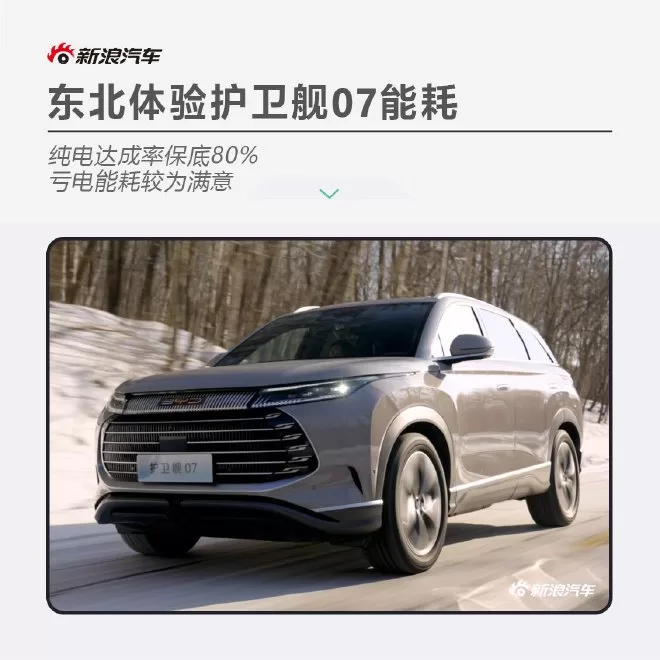
The biggest advantage of plug-in hybrid models is their long range. When both gasoline and electricity are used, many models can achieve a range of over 1000 kilometers. But how do they perform in pure electric and hybrid mode? With this question in mind, Sina Auto went on a test drive at the end of the year to experience the energy consumption of the BYD Tang 07 in Northeast China. The journey was from Jilin City to Jiaohe City, a one-way distance of 133 kilometers, testing energy consumption in both pure electric and hybrid modes to see how plug-in hybrid models perform in temperatures below zero in Northeast China.
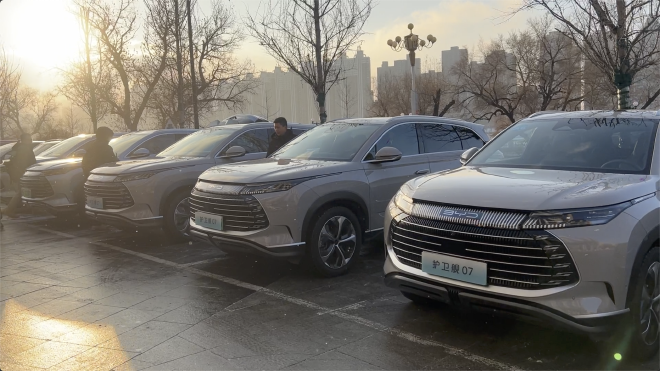
The test was conducted on the 07 DM-i plug-in hybrid model of the escort ship, with a nominal NEDC pure electric range of 205km. However, the winter temperature has some impact on the range, and the battery is forced to maintain power at 25%, prompting the engine to start charging and driving. Therefore, the pure electric energy consumption challenge for the 07 escort ship is still significant for a single journey of 133 kilometers.
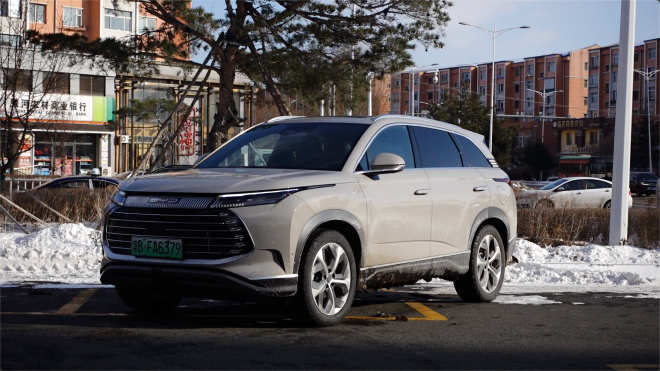
In simple terms, the BYD Ocean Guard 07 is a medium-sized SUV with a plug-in hybrid powertrain. It features BYD’s DM-i/DM-P super plug-in hybrid technology, with NEDC pure electric range of 100km, 205km, and 175km for different models. The DM-i system is for the two-wheel drive model, while the DM-P system is for the four-wheel drive model. All models are equipped with a 139-horsepower 1.5T four-cylinder turbocharged engine and E-CVT transmission.
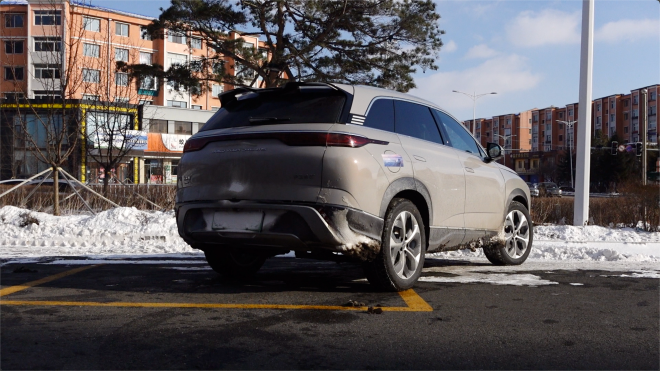
In terms of appearance, the X DREAM concept car-inspired design of the 07 guard ship is steady and atmospheric, with a recognizable front end design inspired by the ripples of the waves. The dimensions of the 07 guard ship are 4820*1920*1750mm, with a wheelbase of 2820mm, making it a standard medium-sized SUV model. Challenging pure electric energy consumption Before departure, the battery level needs to be maintained at 95% or higher, and several settings need to be adjusted. The driving mode should be set to ECO, with forced battery preservation turned on until 25%, and energy feedback intensity set to high. The air conditioning should be set to 25 degrees, with the fan speed maintained at two throughout the journey.


This kind of setting is more inclined towards the normal driving scenario. After all, driving without heating in the weather of the Northeast will definitely be very cold. The energy consumption that conforms to normal driving is the real one.
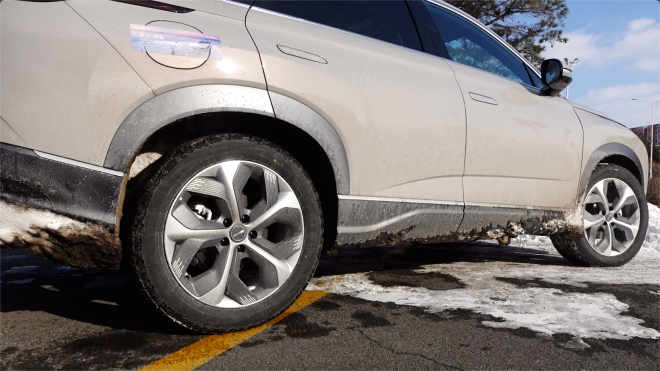
To achieve lower energy consumption, there are several parameters that need to be understood for this car model. One is the weight of the car, with a curb weight of 2140kg for the test drive car. Another important parameter is the wheel group, with the wheel size of 245/50 R20 for this experience. The tire width is moderate and the wheel diameter is large, belonging to a comprehensive wheel configuration.

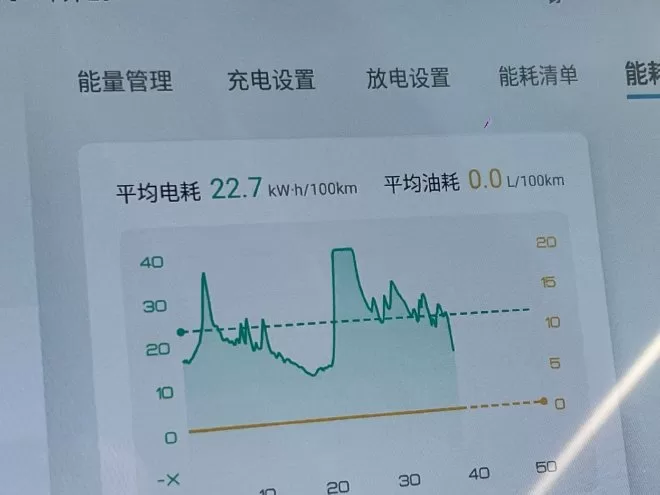
When driving on city roads, most of the ice and snow have been cleared, with only some scattered snowflakes remaining. To save more electric energy, it’s similar to saving fuel – reduce output and maintain kinetic energy. To achieve this, open the new energy option on the central screen, and switch between energy management, energy consumption list, and energy consumption curve to view real-time data. This not only allows you to see average electric consumption intuitively, but also helps improve your driving habits based on the data, such as the angle of the throttle opening and the efficiency of kinetic energy recovery.

In addition, reducing brake frequency and using strong kinetic energy recovery can slow down safely while maintaining energy efficiency. However, when facing sudden oncoming traffic and any road conditions, braking is still necessary to maintain traffic safety. The strong mode of kinetic energy recovery on the escort ship 07 does not actually cause strong dizziness or discomfort, and the drag force is also acceptable, unlike the single pedal mode.

Walking and stopping in the city is not friendly to fuel vehicles. Frequent low gear starting and stopping will increase fuel consumption, but for pure electric vehicles, there is no idle speed, and the output power at low speed starting and stopping is actually not much, probably within 15kW. There is not much increase in energy consumption, and the E-CVT carried by the 07 escort is also a very mature transmission. It is very smooth in the switch between electric drive and internal combustion engine. Of course, in pure electric mode, the smoothness and performance of the E-CVT switch are also very decisive.
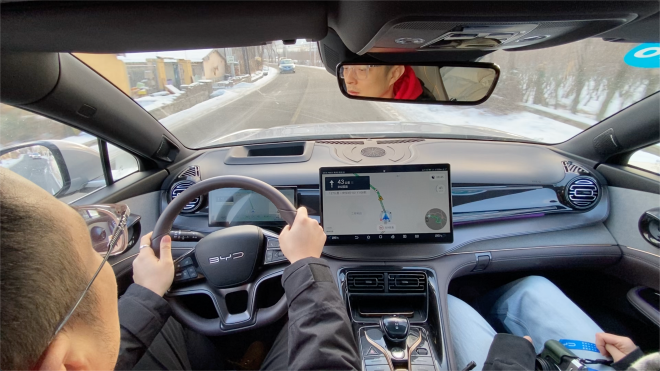
After driving about 20 kilometers on city roads, it is time to enter the national highway and rural roads. The road surface is not only snowy, but also icy. The adhesion of the wheels needs to be very careful in driving. Of course, the speed cannot be increased because there is not much width left for the two-way single lane due to the snow on both sides. However, the steering wheel is still very precise, and the tires convey the details of the road surface directly to the cabin, providing users with a very reassuring driving experience.
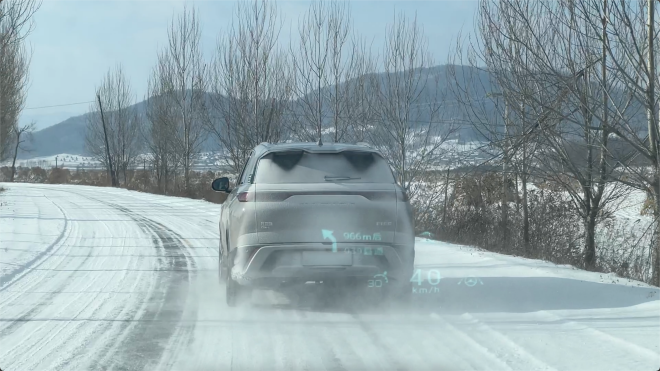
The national road from Jilin to Jiaohe City has many uphill sections, which is the place with the highest energy consumption output for pure electric and fuel vehicles. If the instantaneous energy consumption can be controlled to within 30kW, the average energy consumption can be controlled. Of course, the power output gradually increases when going uphill, and it is necessary to gradually press the accelerator pedal. Therefore, it is impossible to maintain a consistent energy output.
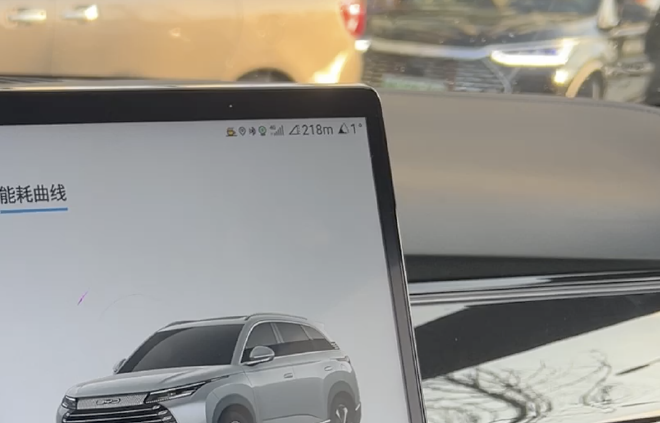
You can see the energy consumption in real time on the energy consumption curve, and the slope size and horizontal drop distance are also displayed in the upper right corner of the central control screen. For a city SUV, this kind of configuration is a bit luxurious, even bordering on the category of hardcore off-road vehicles.

It is necessary to drive with the least energy consumption and the longest pure electric range, looking at real-time curves and related data, but the slight difference in the pressure on the pedal and the psychological factors affecting the throttle pedal is one of the conditions that determine whether the average power consumption can be maintained stable.

Actually, weather and road conditions can affect fuel consumption. Ice and snow can cause resistance on the tires, especially during start-up and low speeds. However, driving at speeds above 60km/h is not significantly impacted.
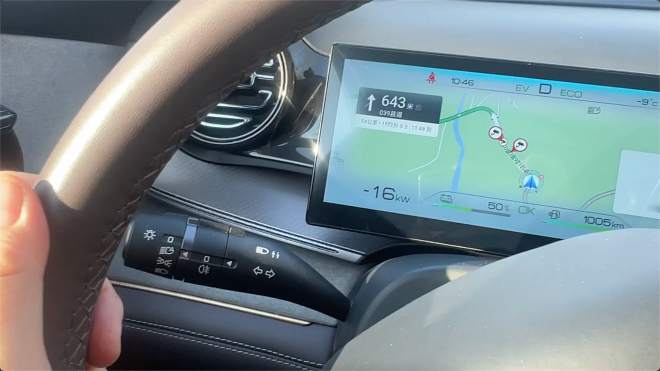
In addition to focusing on output energy consumption, kinetic energy recovery should also be fully utilized. For the power of kinetic energy recovery when slowing down the slope, it mostly stays around -5kW to 10kW, while on steep downhill sections, the instantaneous kinetic energy recovery energy can reach around -19kW, significantly restraining the speed of the wheels. Therefore, it is completely necessary to use potential energy to climb the next uphill and increase the speed.

Of course, in uphill and downhill driving, vehicles cannot escape the law of energy conservation. The electrical energy used will always be returned later. Therefore, in reducing energy consumption, it relies more on the core power combination of the escort 07, in addition to driving techniques.

The temperature control of the battery is crucial. The solution on the 07 escort is a wide-temperature-range, high-efficiency heat pump system. Its heat pump system uses a refrigerant method instead of traditional coolant, allowing direct cooling or heating of the battery, reducing indirect heat transfer loss, improving heat efficiency, and adjusting the battery pack temperature. This is very friendly for a battery that is only 36.8 degrees, and can increase the pure electric driving range in winter by 20%.

The heat pump system not only keeps the power battery working at a constant temperature and warms the cabin, but also helps a lot. The heat pump can also control the temperature by absorbing the excess heat from the powertrain. Compared to traditional PTC heating devices, it is temperature-sensitive, energy-efficient, and does not make the passengers feel cold in the car. The effect is very significant.
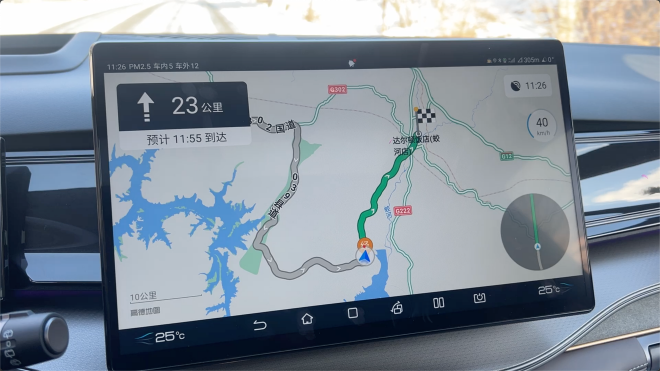
The entire 133-kilometer city + national road + mountain road, the speed of the car is always between 40km/h and 60km/h, this speed is mainly due to safety distance on the icy road surface, relatively speaking, not because of high vehicle speed. In addition to safe driving, all other in-car power consumption remains consistent with normal usage.
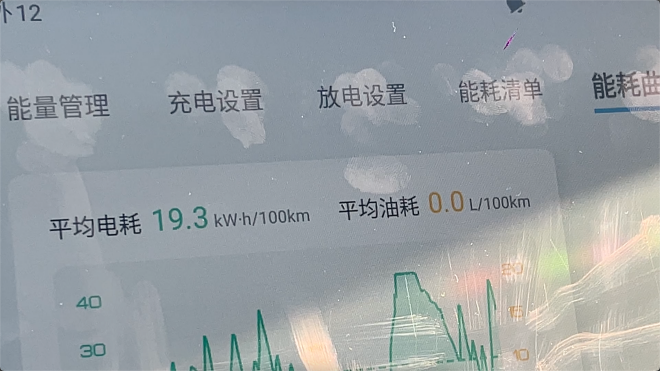
When there were 4.5 kilometers left, the battery reached 25% and entered forced power-saving mode. The total electric driving distance was 128 kilometers, with an electric endurance rate of 87.01%. The average electric consumption per 100 kilometers was 19.3 kW, 2.8 kW less than the official parameter table. The performance of the electric consumption of the 07 escort ship was very satisfactory, even including mountainous road conditions. Therefore, if driving on completely flat highways at high speeds, the electric consumption may be even lower.
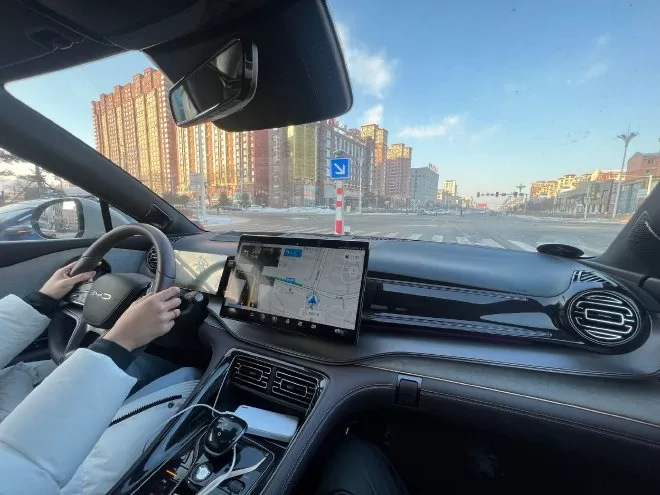
Challenge of energy consumption deficit After lunch and vehicle maintenance, the challenge of energy consumption deficit, which is the fuel consumption per hundred kilometers, and the energy consumption of the hybrid mode, began. Before the challenge of energy consumption deficit, the fuel tank was filled. The fuel tank capacity of the escort 07 series is 60L, and it can be filled with 92 octane gasoline. It can be said that this model can “eat coarse grains” anywhere without worrying too much about refueling in remote areas.
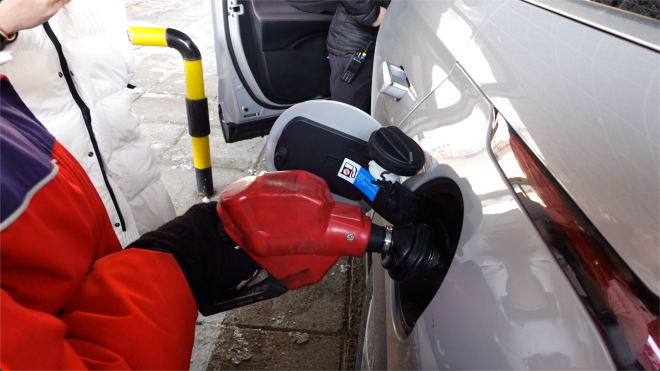
In the fuel-saving challenge, the test of driving skills is whether the vehicle can maintain a stable speed and engine speed. Compared to pure fuel vehicles, the engine speed of plug-in hybrid vehicles will be kept in an efficient range because there is no gear adjustment. Therefore, maintaining a lower speed is more important. This requires the car to reduce wind resistance and power in its design. The wind resistance coefficient of SUV models is often higher than that of sedans due to the size of the vehicle. Therefore, it is still difficult to achieve significant fuel savings.
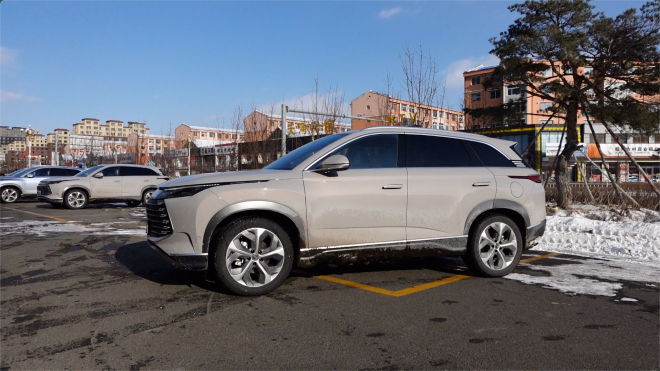
However, the escort 07 has made great efforts to reduce wind resistance, not only using hidden door handles, but also using low wind resistance wheel rims, suspended roofs, and spoiler on the rear windshield, forming a drag coefficient of 0.218Cd, just like a car.
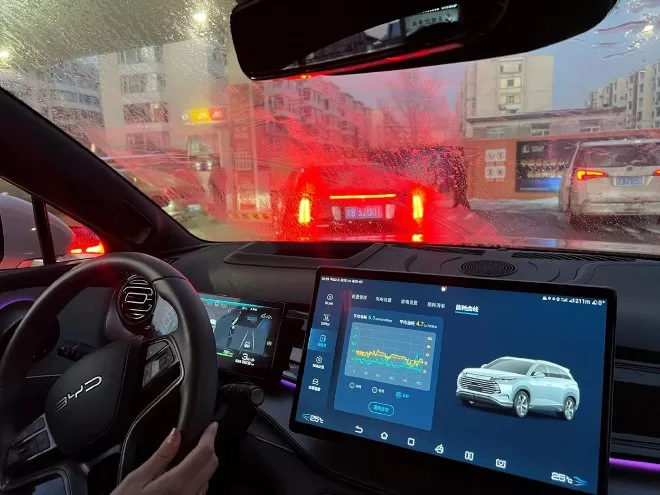
Fuel consumption can also be seen from the energy consumption list and the energy consumption curve, but the average fuel consumption data will be slightly later than the electric consumption, this is because fuel consumption requires more sensors to collect data, but it is also relatively accurate. The average speed of the return journey is basically maintained at 80-90 km/h. After completing the return journey of 133 kilometers, our average fuel consumption dropped to 4.7 liters per 100 kilometers, while the average electric consumption was 0.3 kWh/100km, which is a relatively low energy consumption. It also reflects that in the case of power loss driving, if the power output is stable, the fuel consumption will remain relatively low. For long-distance driving, the 07 escort can give the driver and passengers a very reassuring feeling.
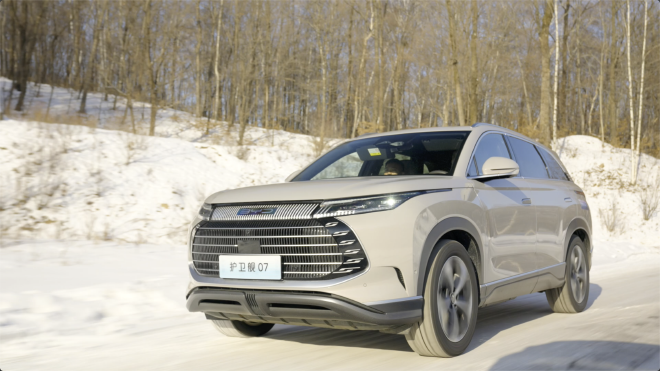
In summary, the energy consumption challenge for the 07 escort ship is very satisfactory. The final results of pure electric and deficit electricity can explain that plug-in hybrid is reliable in the Northeast region and cold environment. Compared to pure electric, the anxiety of energy supplementation will be relieved. The DM-i of the plug-in hybrid has the ability to travel nationwide. The 07 escort ship series has been on the market for a year, and as of December 2023, the cumulative sales in 2023 are 60,545 vehicles. Hopefully, this energy consumption challenge will allow more consumers to see the comprehensiveness of plug-in hybrid power, not only providing solid endurance, but also efficient power, meeting the needs of users for all-weather commuting.